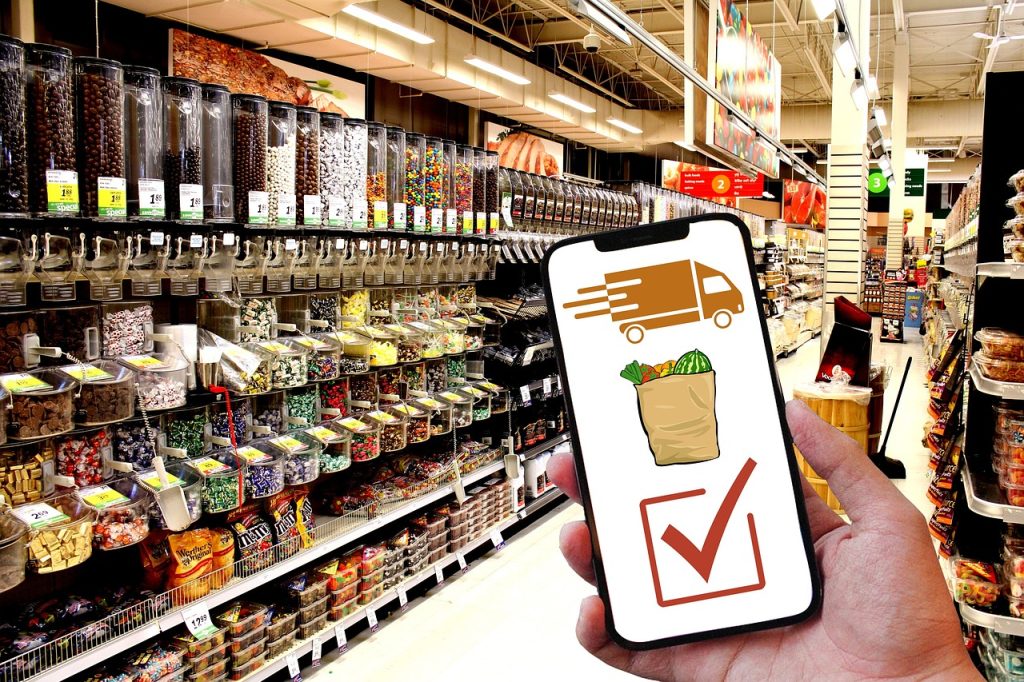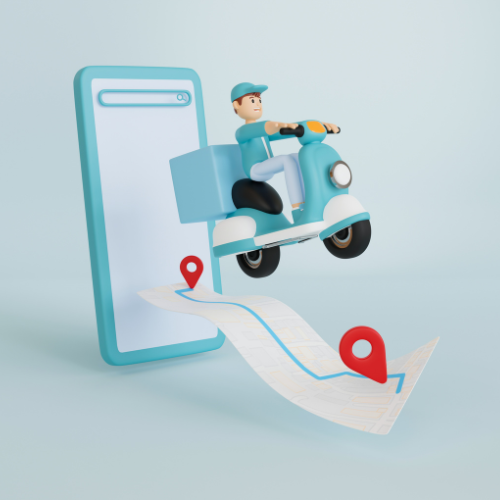How to Offer Free Delivery for Local Shoppers for the Holidays Part 2: How to Get Out of the Red for 2025
How to Offer Free Local Delivery for the Holidays
In Part 1, we talked about the urgent need to offer free delivery this holiday season as a lifeline to increase sales and stay in business. We covered basic tips for getting started, but now it’s time to dig a little deeper.
This is part 2 of a 3-part series. Read part 3.
The reality is that many local businesses are in the red, and you need fast, effective solutions to turn things around before the year ends. Adding delivery services can be that quick solution to bring in more customers, boost your sales, and keep your business afloat.
Let’s look at the next steps to make this happen.

Step 1. Set a Local Delivery Zone
The first step is simple: define where you’ll deliver. You don’t have to deliver everywhere. Start with nearby neighborhoods where delivery is easy and efficient. Focus on offering free delivery within a specific radius around your store to keep costs manageable.
This helps ensure you’re targeting the customers most likely to shop with you and reduces the chance of overextending yourself. By establishing a clear delivery zone, you’ve laid the foundation for a successful delivery service that reaches the right customers while keeping your resources in check.
Now, it’s time to set up the logistics to get those orders out to your local customers.
Step 2. Setup Your Delivery Service
Once you’ve defined your delivery zone, it’s time to set up the actual delivery service. You have two low-cost options, depending on your type of business:
Option 1: Use a Third-Party Delivery Platform (For Food Service Businesses)
If you run a food service business, partnering with popular third-party platforms is one of the easiest ways to start delivering. These services handle all the logistics, so you don’t need to hire additional staff. Some of the most popular options include:
- Uber Eats
- DoorDash
- Grubhub
- Postmates
- Caviar
- Waitr
- ChowNow
- Saucey (for alcohol delivery)
While convenient, these services charge fees and take a percentage of your sales, giving you limited control over the customer experience. However, they can boost sales and promote your delivery options while you work toward building your own system.
Pros:
- Instant Setup: You can start delivering almost immediately with minimal setup.
- Broad Customer Base: These platforms already have a large user base, potentially bringing more eyes to your business.
- No Need for Extra Staff: The delivery logistics are handled by the platform, so you don’t need to hire or train drivers.
Cons:
- High Fees: These platforms charge a significant commission on each sale, cutting into your profits.
- Limited Control: You won’t have much say over the delivery experience, such as speed or customer interaction.
- Competition: Your business may be listed alongside competitors on the platform, making it harder to stand out.
Option 2: Set It Up on Your WordPress Website (For Food & Non-Food Businesses)
For food, retail, and non-food businesses, an easy, cost-effective option is to set up your own delivery system using your WordPress website. With plugins like WooCommerce, you can add delivery options at checkout and manage the entire process in-house. This gives you full control and personalization over your delivery service without relying on third-party platforms.
If you already have a website, all you need is the right plugin. This setup eliminates third-party fees, gives you control over the customer experience, and allows for a more tailored service. If you’re familiar with WordPress, you can handle the setup yourself, or you can consult a designer if needed.
Pros:
- Full Control: You can oversee the entire delivery process, from communication to timing and customer service.
- Customizable Experience: Tailor your delivery system to fit your brand’s style and your customers’ preferences, from delivery windows to personalized packaging.
- Direct Customer Relationship: You have direct access to customer data, which can be used for future marketing and customer loyalty efforts.
- Customer Experience: You control when the food goes out, and your trusted employees deliver it, ensuring you’re in charge of the entire customer experience from start to finish.
- Faster Adjustments: You can make on-the-fly changes to your delivery process, such as adjusting delivery times, routes, or promotions, without needing approval from a third-party service.
- Local Branding: By handling delivery yourself, you can reinforce your brand’s presence in the local community, through branded delivery vehicles, uniforms, or packaging.
- Flexibility: You can offer special delivery services like same-day or scheduled deliveries, which third-party platforms may not provide or may charge extra for.
- Loyalty Programs: You can integrate your delivery system with customer loyalty or referral programs, offering incentives for repeat orders directly through your own platform.
- No Third-Party Fees: You avoid commissions and platform fees, keeping more of your profits.
- More Profit Margins: Without third-party fees cutting into your profits, you retain a higher percentage of each sale, which is especially important for high-volume businesses.
Cons:
- Upfront Setup: Requires initial setup time and potential costs for plugins, website modifications, and testing.
- Logistical Responsibility: You’ll need to manage drivers, delivery routes, and customer communication, which can require additional resources.
- Ongoing Maintenance: While most plugins and WordPress update automatically, occasional monitoring and minor adjustments may be needed to ensure the delivery system runs smoothly. However, the maintenance involved is minimal once the setup is complete.
Setting up your own delivery system may take a bit of effort upfront, but the long-term benefits—including higher profit margins and complete control over your customer experience—make it a worthwhile investment. Once your system is in place, you can start promoting your new free delivery service to local customers.
Step 3. Promote the Offer
Once your delivery service is set up, the next step is to get the word out. You want local shoppers to know about your free delivery offer and act quickly to take advantage of it.
Here are a few effective ways to promote it:
- Social Media: Post regularly on your social media accounts about your free delivery service. Use holiday-themed graphics and engaging posts to remind your followers they can shop from home and get their items delivered for free.
- Email Marketing: Send out an email to your existing customers announcing the free delivery offer. Include clear instructions on how they can place an order and emphasize the convenience of having purchases delivered directly to their doorstep.
- In-Store Signage: Put up signs inside your store, especially at the checkout area, to inform shoppers about the offer. You can also encourage them to spread the word to friends and family or make future purchases online.
- Window Signs and Banners: Place eye-catching signs or banners in your storefront windows or on the exterior of your business. Use bold colors, simple wording, and large fonts to clearly advertise your free delivery offer to passersby.
- Sidewalk Signs: A-frame or sandwich board signs placed outside your store can grab the attention of foot traffic or drivers passing by. Keep the messaging short and direct, like “Shop Now, Free Local Delivery!” Include a QR code or website link for easy ordering.
Be sure to create a sense of urgency by making this a limited-time holiday offer. Remind customers that free delivery won’t last forever, which encourages them to place orders sooner rather than later.
Make Delivery Scarce, Not Just Free
To drive even more urgency, let your customers know that free delivery slots are limited. Phrases like, “Limited delivery spots available daily!” or “Offer valid while delivery slots last” will create a sense of scarcity, encouraging shoppers to place their orders sooner rather than later.
Partner with Other Local Businesses
Another great way to spread the word and maximize delivery efficiency is by partnering with nearby local businesses. You can cross-promote each other’s free delivery services, or even combine deliveries to save time and resources. Not only does this build relationships with other business owners, but it also reinforces the “shop local” mentality for your customers.
Take Advantage of ‘Free Delivery’ This Holiday Season
The holiday season is the perfect time to offer free delivery and boost your business’s visibility. By providing this added convenience, you’ll attract more local customers who are looking for easy, stress-free shopping options.
Don’t miss out on the opportunity to increase holiday sales and build customer loyalty. Start offering free delivery today and watch your year-end sales soar.
“Shop with us and get free delivery this holiday season!”







